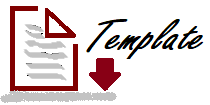The Effect Of Problem-Based Learning On Critical Thinking Skills On IPS Spelling
(1) MTs Terpadu Nurul Amal
(*) Corresponding Author
DOI: https://doi.org/10.56680/slj.v3i1.30957
Abstract
Keywords
Full Text:
PDFReferences
Ardiyanti, Y. (2016). Berpikir Kritis Peserta didik Dalam Pembelajaran Berbasis Masalah
Berbantuan Kunci Determinasi. JPI (Jurnal Pendidikan Indonesia), 5(2), 872-882. DOI:
http://dx.doi.org/10.23887/jpi-undiksha.v5i2.8544.
Ayuningrum, & Susilowati. (2015). Pengaruh Model Problem Based Learning terhadap
Keterampilan Berpikir Kritis Peserta didik SMA pada Materi Protista. Jurnal of
Biology Education, 4(2). Retrieved from https://www.google.co.id/search?q=Ayuningrum+Susilowati+2015+berpikir+kritis&oq=Ayuningrum++Susilowati+2015+berpikir+kritis&aqs=chrome.69i57.25496j0j4&sourceid=chrome&ie=UTF-8.
Choi, E., Lindquist, R., & Song, Y. (2014). Effects of Problem-Based Learning vs. Traditional
Lecture on Korean Nursing Students’ Critical Thinking, Problem-Solving, and Self-
Directed Learning. Nurse Education Today, 34(1), 52–56. https://doi.org/10.1016/j.nedt.2013.02.012.
Golightly, A., & Raath, S. (2015). Problem-Based Learning to Foster Deep Learning in
Preservice Geography Teacher Education. Journal of Geography, 114(2), 58–68.
https://doi.org/10.1080/00221341.2014.894110.
Kamin, C. S., O’Sullivan, P. S., Younger, M., & Deterding, R. (2001). Measuring Critical
Thinking in Problem-Based Learning Discourse. Teaching and Learning in Medicine, 13(1), 27–35. https://doi.org/10.1207/S15328015TLM1301_6
Kwan, T., & So, M. (2008). Environmental Learning Using a Problem-Based Approach in the
Field: A Case Study of a Hong Kong School. International Research in Geographical
and Environmental Education, 17(2), 93–113.
Nursiti, N., & Barat, W. L. J. (2013). Keterampilan Berpikir Kritis (Critical Thinking Skill)
dalam Pembelajaran Ilmu Pengetahuan Sosial. Widyaiswara LPMP Jawa Barat.
Retrieved from
http://www.academia.edu/download/32163452/Keterampilan_Berpikir_Kritis.docx.
Oktavianto, D. A. (2017). Pengaruh Pembelajaran Berbasis Proyek Berbantuan Google Earth
terhadap Keterampilan Berpikir Kritis the Effect of Project-Based Learning Assisted
Google Earth to Spatial Thinking Skills. Jurnal Teknodik, 21(1), 059.
Ramawati, I. (2016). Pemanfaatan Lingkungan Sekitar Sebagai Sumber Pembelajaran Untuk
Meningkatkan Kemampuan Berpikir Kritis. Jurnal Geografi Gea, 16(1), 66–87.
https://doi.org/10.17509/gea.v16i1.3469.
Sumarmi. (2012). Model-model Pembelajaran Geografi. Aditya Media. Retrieved from
https://www.belbuk.com/modelmodel-pembelajaran-geografi-p-42009.html.
Thomas, I. (2009). Critical Thinking, Transformative Learning, Sustainable Education, and
Problem-Based Learning in Universities. Journal of Transformative Education, 7(3),
–264.
Weiss, G. (2017). Problem-Oriented Learning in Geography Education: Construction of
Motivating Problems. Journal of Geography, 116(5), 206–216.
https://doi.org/10.1080/00221341.2016.1272622.
Yeung, S. (2010). Problem-Based Learning for Promoting Student Learning in High School
Geography. Journal of Geography, 109(5), 190–200.
https://doi.org/10.1080/00221341.2010.501112.
Article Metrics
Abstract view : 347 times | PDF view : 5 timesRefbacks
- There are currently no refbacks.
Copyright (c) 2022 Social Landscape Journal














